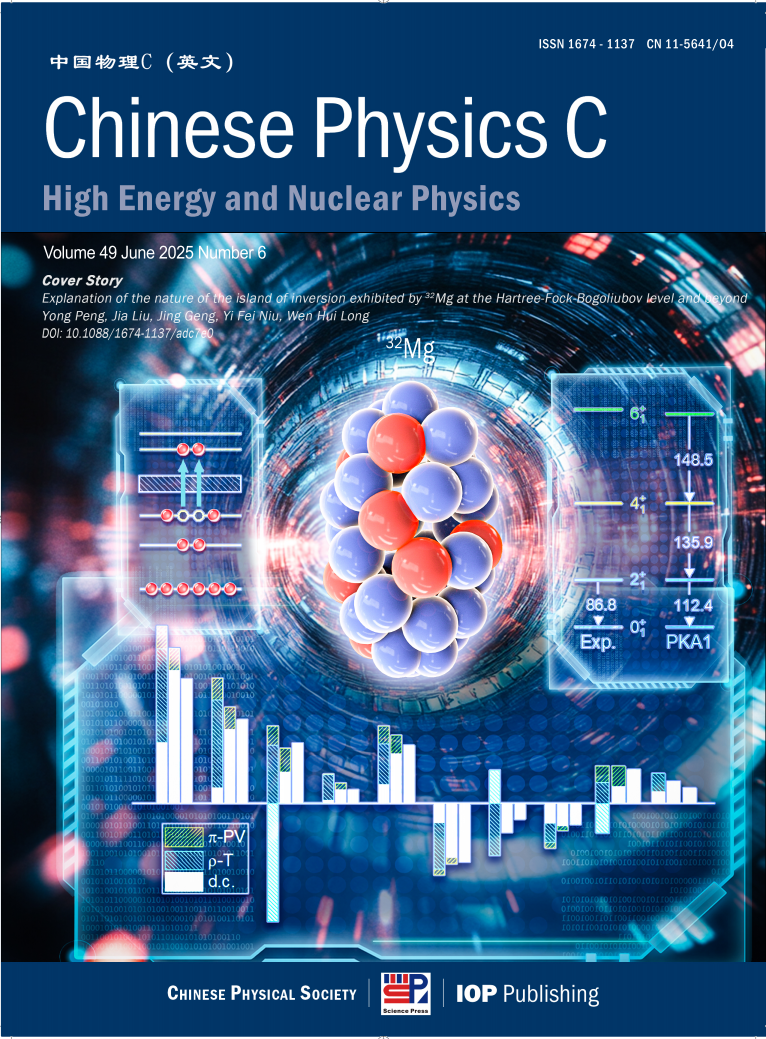Cover Story (Issue 9, 2024) Measurement of solar pp neutrino flux using electron recoildata from PandaX-4T commissioning run
Author: Prof. Ben-Da Xu (Tsinghua University, Beijing)
The most abundantsolar neutrino from the proton-proton (pp) fusion provides us the uniqueprobe to the stellar core and is the only component that propagates to theearth through the vacuum oscillation mode. Though Borexino in 2012 managed topenetrate the C-14 beta decay curtain with clever tricks of energy spectrafitting, it is crucial to make precise and clean measurement of pp solar neutrino flux and energy spectrum. More than 20 years has passed since Professor Y. Suzuki, one of the main figures behind the solar neutrino measurement at Super-KamiokaNDE and the solution of the solar neutrino problem, proposed to use liquid xenon for real-time detection of elastic scattering of pp solar neutrino on electrons. The vision was a 10-ton liquid xenon that are freeof inevitably hindersome C-14 with organic liquid scintillators. Today, the vision is about to come true.
The PandaX collaboration utilized the PandaX-4T dual-phased liquid-xenon TPC to search for pp neutrinos. Although the electron-scattering signals are indistinguishable from the overwhelming beta and double-beta decays of Kr-85 and Xe-136, the collaboration managed to set a meaningful limit of 23.3×1010s-1cm-2 with a central value of 8×1010 s-1cm-2, consistent with the prediction of standard solar model. It marks the beginning of a new era to detect solar neutrino with direct dark-matter search experiments, with more excitement ahead of us when PandaX-4T finishes full
data-taking, afterthe upgrade of distillation tower to suppress Kr, or possibly deploying separate Xe-136 depleted and enriched liquid xenon sub-detectors optimized for solar neutrino and neutrinoless double-beta decay.
Measurement of solar pp neutrino flux using electron recoildata from PandaX-4T commissioning run
Author: Prof. Ranucci Gioacchino(Italian National Institute of Nuclear Science)
The paper “Measurement of solar pp neutrino flux using electron recoil data from PandaX-4T commissioning run” marks the enter of PandaX-4T as a new player, as well as of liquid Xenon as a new technology, in the long and successful saga of the experimental detection of solar neutrinos.
The origin of thisscientific adventure traces back to the idea of Pontecorvo to look for the neutrinos allegedly coming from the nuclear reactions occurring in the Sun, to prove the correctness of the theory put forward by Bethe and von Weizsäcker in 1938, which assumed two nuclear sequences, defined respectively as pp chain and CNO cycle, at the basis of the engine powering our star.
A suite of experiments followed, which over more than 50 years of operation culminated, on one hand, in the definite proof of the validity of the nuclear hypothesis as source of the energy of the Sun, and on the other in the demonstration of the neutrino oscillation phenomenon, implying that neutrinos are massive particles and not massless, as assumed by the standard model of particle physics. Two Nobelprizes, respectively in 2002 and 2015, crowned these groundbreaking achievements.
However, since sometime the field has seen a vigorous debate on how to go on and expand the measurement capabilities beyond the limit of the technologies employed so far. Special emphasisin this quest is the further extension to lower energies of the real time spectroscopic measurement performed by Borexino of the so-called pp neutrinos, which, producedin the dominant proton-proton fusion, represent the vast majority of the neutrinos from the core of the Sun.
With the present paper, the PandaX-4T Collaboration has brilliantly shown for the first time how this feat can be accomplished via scattering of the solar neutrinos off theelectrons in a liquid Xenon detector, over an ample low energy window previously not accessed of recoiled electrons, ranging from 24 to 144 keV.
The more remarkable aspect of this first glimpse of solar neutrinos in a dark matter detector is the deep background study performed by the Collaboration, essential to ascertain the registered counts due to the pp neutrinos form those attributable to internal forms of radio activity. It is well known that, in this respect, the low energy region of any apparatus is very challenging, due to the multiple background contributions accumulated there.
PandaX-4T has coped with this hurdle through the development of an accurate background model, accounting for the radon and krypton impurities in liquid xenon, the contamination of detector materials, and radioactive xenon isotopes. It is thanks to this careful understanding that the final fit performed in the region of interest hints successfully at the presence of the pp signal, in addition to the multiple background components occurring in the same interval.
The takeaway of this brand-newresult is twofold: it demonstrates that, as long advocated over the past years, the Xenon dark matter detectors hold the capability to reveal low energy solar neutrinos, and that the key to unlock this feature relies on the precise background modeling.
In conclusion, this achievement of PandaX-4T is a first step on a promising new experimental avenue characterized by the perspective to open novel scenarios in the mature field of solar neutrinos, marked by the role that dark matter liquid noble detectors could play in the future, in the wake of the first result the Collaboration has justunveiled.
References














